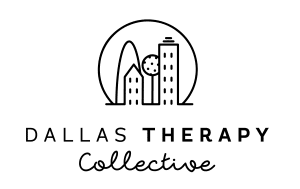Here at DTC, we work a lot with people seeking childhood trauma counseling. If you’re reading this blog, you may have experienced trauma yourself, or maybe you’re close to someone who has experienced trauma and you want a better way to understand them. That’s why today’s post on the drama triangle might give a helpful framework to help you better understand what happens in relationships when past unresolved trauma runs the show. I hope this is helpful for you to not only better understand what’s going on, but also gain some tools to stop the cycle and find a way out!
What is the Drama Triangle?
The drama triangle was a theory created by a therapist named Stephen Karpman to describe a pattern of drama-intense relationships in which people can get stuck. Also called the “trauma triangle,” this is a pattern of relating that I’ve noticed with many of my clients who experience trauma. Essentially, the theory states that we can get stuck in a pattern of falling Victim, Rescuer, or Perpetrator/Persecutor in relationships with ourselves and others. (NOTE: please read this post with the ultimate empathy! Remember, realizing that you might fall into these patterns does not make you a bad or a “crazy” person. It just makes you a person who is working really hard to find a better solution!)
Who gets trapped in it?
Often people who have experienced trauma, especially complex trauma over the course of many years, feel stuck emotionally in their traumatic experiences. These individuals may find themselves in relationships with others who may draw them into these drama-triangle patterns so that they feel forced into taking one of the three roles. Or, because perspective can be tricky, they might view otherwise healthy (i.e., non-abusive) relationships as stuck in the triangle. Regardless, it’s a very helpless pattern.
I really like this model for a few reasons. One, its pretty easy to understand, and I’ve found that many of my clients with trauma and attachment issues find it pretty spot on in their lives. Two, a model like this gives a clearer path for a solution out solution (tune into Part Two on how to get out of this triangle!). Lets dive in to the details.
The victim
The Victim feels helpless, scared, and unsure how to take any power or control back into their lives. It’s pretty clear to understand how this identity developed: people who have experienced trauma are often victims of abuse and circumstances that were often way outside of their control. Naturally, this is not an easy state to stay in, so the Victim will often look for a Rescuer to swoop in (unless the Perpetrator gets to them first). While the victim wants to be helped and rescued, the problem is that relying 100% on others is a sure path towards continued helplessness and powerlessness. The victim is totally reliant on another person to get them out of their situation, which almost always will go awry.
The rescuer
The Rescuer is the savior of the bunch. The rescuer has lots of power and control, but frankly, they assume more control than they really have. The rescuer believes that if they just put themselves totally on the backburner, that they can save the day! Sometimes, the Victim will transform into the all-helpful and powerful Rescuer because it’s a really nice reprieve from feeling helpless and powerless. But the issue is that no one has full control over any situation, and it enables the Victim to stay powerless and continue to be not in control of their life. Therefore, the rescuer often feels incredibly helpless, thus moving back towards either the Victim or Perpetrator role.
The perpetrator/persecutor
The Perpetrator/Persecutor tends to be pretty harsh and critical. This is the internalization of the primary abuser from the past trauma. Often this role sits in lots of anger and defensiveness: “How dare you hurt me! I’ll hurt you back, and harder!” On one hand, this role can feel really safe! No one can get in and you’re protected. But on the other hand, this role can lead to lots of shame and regret, since anger not only doesn’t help the situation but often puts out farther out of reach of the love and support we’re really looking for. Helplessness arises again, and here we are back into another role to escape.
The downside
If you can’t already tell, none of these identities really leads to what a person ultimately wants: a sense of mastery and ability to handle the situation without feeling helpless. Staying in the triangle becomes a negative feedback loop, creating a chaotic sense of oneself and others, and therefore lots of depression and anxiety. It doesn’t allow for healthy relationships between two people where imperfection and flaws exist, and it sure doesn’t allow for true care and vulnerability to live.
I’m sure your next question is, ok… NOW WHAT?! If you relate to any of this, please stay tuned for Part Two: Stepping Out of the Triangle. I promise you, there is an alternative.
Are you looking for a therapist in Dallas, TX for childhood trauma counseling? Check out our specialty page to learn more about childhood trauma and to see if one of our therapists might be a good fit for you!


